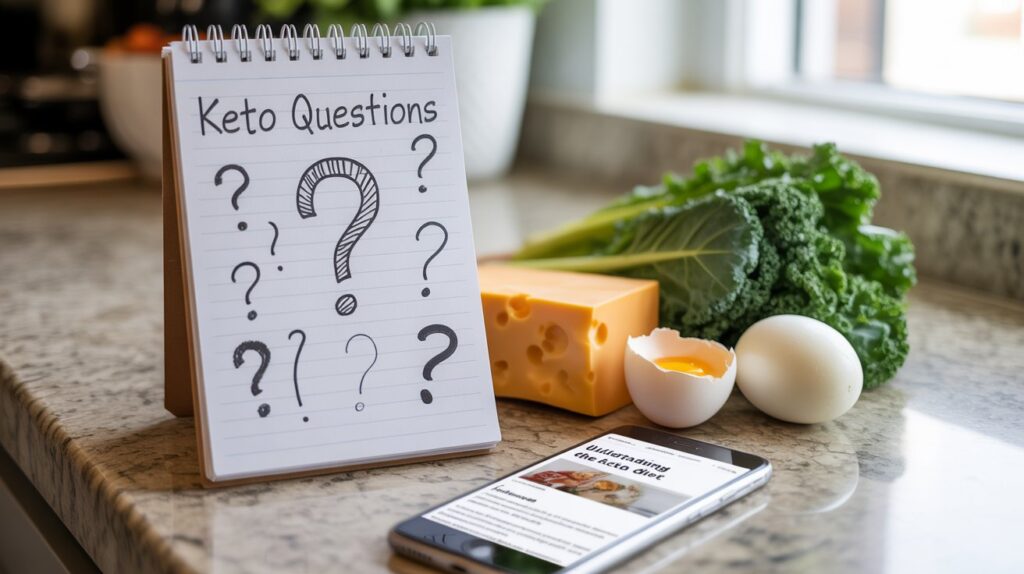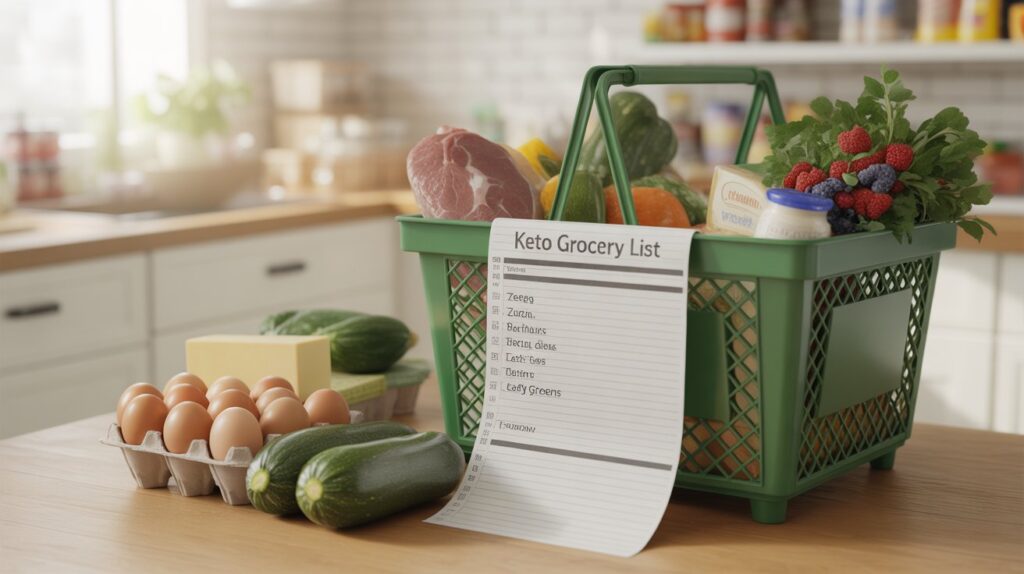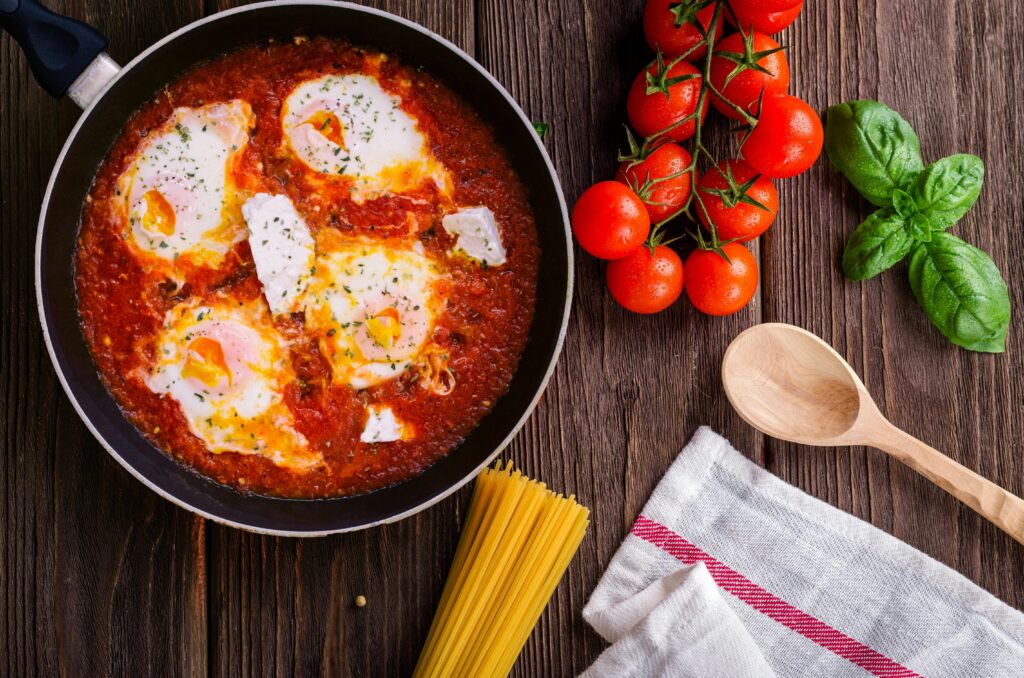
Let’s Take the Pressure Off First
If you’re feeling overwhelmed with percentages, numbers, or calorie math… pause. Breathe.
You’re not failing. You’re learning.
Keto macros sound complicated at first — but this guide will walk you through them in a way that feels like someone’s sitting with you, breaking it all down gently.
By the end of this article, you’ll understand:
- What keto macros are (and why they matter)
- How to figure out your ideal balance of fat, protein, and carbs
- How to make it work in your real life — without obsessing
Let’s start simple and build from there.
What Are Macros? (And Why Should You Care?)
“Macros” is short for macronutrients — the three main components of everything you eat:
- Fat
- Protein
- Carbohydrates (carbs)
On keto, the goal is to shift your body into ketosis, where it burns fat (instead of carbs) for fuel. This won’t happen unless you adjust your macros — specifically, by lowering carbs and increasing fat.
Think of macros like dials on a radio. When you turn one down (like carbs), you have to turn another up (like fat) to keep the signal (your energy) clear.
The Classic Keto Macro Ratio
Most people following a standard keto diet aim for a daily intake that looks something like this:
- 70–75% of calories from fat
- 20–25% from protein
- 5–10% from net carbs
But wait — does that mean your plate should look like a stick of butter with a sprinkle of chicken?
Nope. That ratio is based on calories, not volume or portion size. Fat is more calorie-dense than protein or carbs, so it takes up less space on the plate but more space in your energy budget.
Let’s go deeper — but gently.
How to Figure Out Your Keto Macros
You don’t need to be perfect with numbers, but getting a rough idea helps you stay on track.
Step 1: Find Your Daily Calorie Needs
Your total daily energy needs depend on your:
- Age
- Weight
- Height
- Activity level
- Goal (fat loss, maintenance, or muscle gain)
Use a simple keto calculator (like this one) to estimate your Total Daily Energy Expenditure (TDEE).
Let’s say your TDEE is 1800 calories per day.
Step 2: Apply the Keto Ratio
Now, use the keto percentages to break that 1800 calories into macros:
✅ Fat: 70% of 1800 = 1260 calories ÷ 9 = 140g fat/day
✅ Protein: 25% of 1800 = 450 calories ÷ 4 = 112g protein/day
✅ Carbs: 5% of 1800 = 90 calories ÷ 4 = 22g net carbs/day
🎯 Your daily target: 140g fat, 112g protein, 22g net carbs
Lazy Girl Tip: Don’t chase perfection. If you hit close to your protein and stay under your carbs, the rest will fall into place. Fat can be adjusted based on how full or tired you feel.
What Are Net Carbs Anyway?
This trips people up a lot.
Net carbs = total carbs – fiber – sugar alcohols
So if a food has:
- 10g total carbs
- 4g fiber
- 2g sugar alcohols
It has 4g net carbs.
Net carbs are what affect your blood sugar and can kick you out of ketosis — so that’s the number you care about.
Want to learn more? Read: Keto for Beginners: Everything You Need to Know Before You Start
Let’s Talk Protein (Because This Part Really Matters)
Protein is where many people go wrong on keto — either eating too much (which can raise insulin), or too little (which leads to muscle loss and fatigue).
You want to eat enough to support your muscles, hormones, and satiety — but not so much that your body converts it into glucose (a process called gluconeogenesis).
🎯 Rough protein target:
- 0.7–1.0g of protein per pound of lean body mass
- If you’re not sure, a safe average is 90–130g of protein/day for most women
Good protein sources:
- Eggs
- Chicken thighs
- Ground beef
- Salmon
- Shrimp
- Cottage cheese
- Protein powder (check carbs!)
Need a deeper dive? Read: The Ultimate Keto Grocery List: What to Buy and What to Avoid
Fat: The Star of the Show (But Don’t Overdo It)
Fat keeps you full, fuels ketosis, and makes your food delicious — but it’s easy to overeat if you’re not paying attention.
Focus on quality fats, not just quantity.
✅ Eat more of:
- Avocados & avocado oil
- Olive oil
- Ghee & butter
- Coconut oil & MCT oil
- Nuts & seeds (in moderation)
🧈 Don’t feel like you need to “add fat” to every meal. Your body can also burn stored fat — especially if your goal is weight loss.
Putting It All Together: A Real Life Example
Let’s build a day based on 140g fat, 112g protein, and 22g net carbs.
🍳 Breakfast
- 2 eggs cooked in butter
- Half avocado
- Coffee with 1 tbsp MCT oil
→ 25g fat / 14g protein / 3g net carbs
🥗 Lunch
- Grilled chicken thigh
- Spinach, olive oil, feta, cucumbers
- 1 boiled egg
→ 35g fat / 40g protein / 6g net carbs
🍗 Dinner
- Salmon with garlic butter
- Roasted zucchini and mushrooms
- Small handful of walnuts
→ 50g fat / 40g protein / 7g net carbs
🧀 Snack
- 1 string cheese
- 1 square dark chocolate (85% or higher)
→ 15g fat / 10g protein / 2g net carbs
Daily Total:
140g fat / 104g protein / 18g net carbs
🎯 Pretty close — and totally doable
Do You Have to Track Macros?
No. Tracking is helpful in the beginning, but it doesn’t have to be your forever tool.
📱 Helpful apps:
- Carb Manager
- Cronometer
- MyFitnessPal (with custom macros)
If tracking makes you anxious, use it for one week just to learn your patterns. Then trust yourself more over time.
Common Macro Mistakes (And How to Avoid Them)
❌ Obsessing Over Fat
You don’t need to eat fat bombs or drink butter coffee just to hit your macros. Eat fat to fullness, not excess.
❌ Ignoring Protein
Undereating protein leads to low energy, muscle loss, and cravings. Prioritize it.
❌ Forgetting Electrolytes
When you lower carbs, you also lose sodium, potassium, and magnesium — which affects energy and mood. Add salt, drink broth, and consider supplements.
Need help with this part? Read:
👉 Surviving Your First Week on Keto: Tips, Side Effects & What to Expect
How to Adjust Macros If You’re Not Seeing Results
⚖️ Not losing weight?
- Make sure you’re in a calorie deficit
- Track honestly for a few days
- Cut back slightly on added fats
💤 Low energy or brain fog?
- Increase salt, water, and potassium
- Make sure you’re eating enough fat
- Check for hidden carbs in sauces, dressings, or snacks
🍫 Craving sugar?
- You may need more protein or fat at meals
- Or — you might just be detoxing from sugar. It passes.
Need help troubleshooting your meals? Read:
👉 Lazy Girl’s Guide to Staying on Keto Without Losing Your Mind
What If You Just Want It All Done for You?
If all this still feels like too much, I get it. That’s why I created the 28-Day Lazy Girl Keto Meal Plan — it removes all the guesswork.
You’ll get:
- A done-for-you macro-balanced plan
- Simple grocery lists
- No stress, just structure
- Recipes that taste amazing (and don’t require 14 steps)
👉 Grab your plan here – just $6
You Don’t Have to Be a Math Genius to Do Keto
All you really need is:
- A sense of what your macro targets look like
- A way to build balanced meals
- And the grace to know that progress > perfection
You’re learning how to fuel your body in a whole new way. That takes guts, patience, and kindness.
And you’re doing it.
Keto Diet FAQs: 20 Questions Everyone Asks (and Honest Answers)
Starting keto is like walking into a new country where everyone speaks a different language—net…
Surviving Your First Week on Keto: Tips, Side Effects & What to Expect
Week 1 of keto can feel like a tiny storm in your body. But it…
Keto Macros Made Easy: How Much Fat, Protein & Carbs You Really Need
Let’s Take the Pressure Off First If you’re feeling overwhelmed with percentages, numbers, or calorie…
The Ultimate Keto Grocery List: What to Buy and What to Avoid
Let’s Make This Grocery Run Feel Less Overwhelming If you’re standing in the middle of…
How to Start Keto Without Losing Your Mind
Let’s Sit Down for a Minute If you’re reading this, you’re probably thinking about starting…



